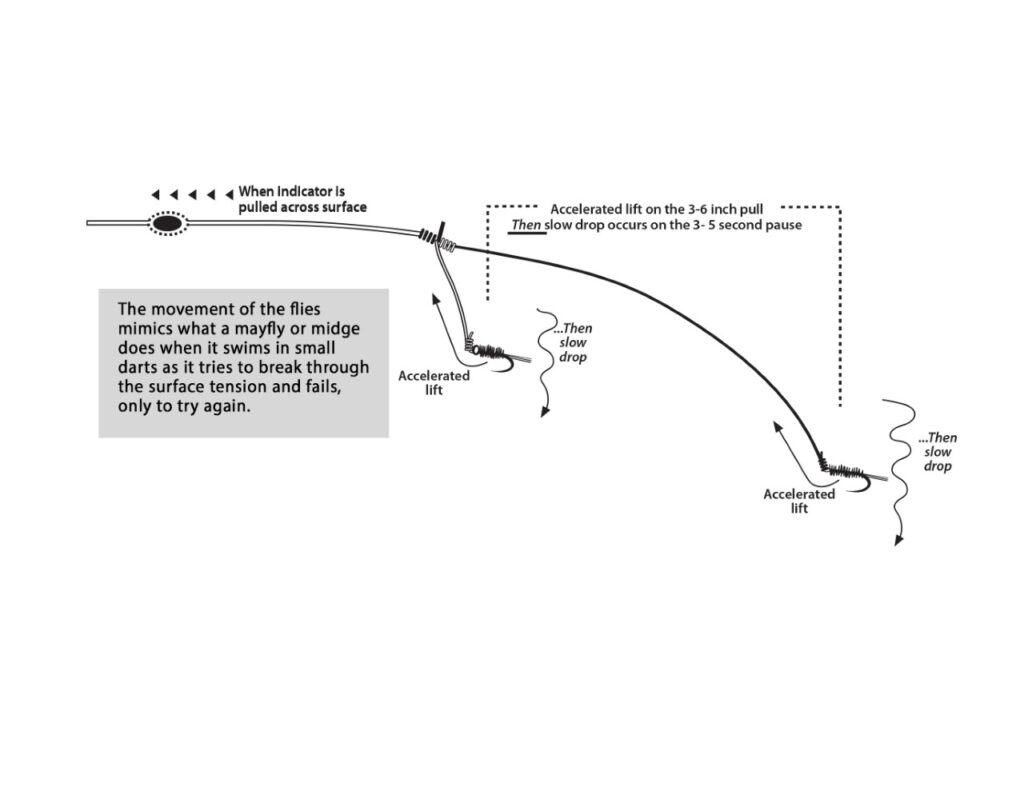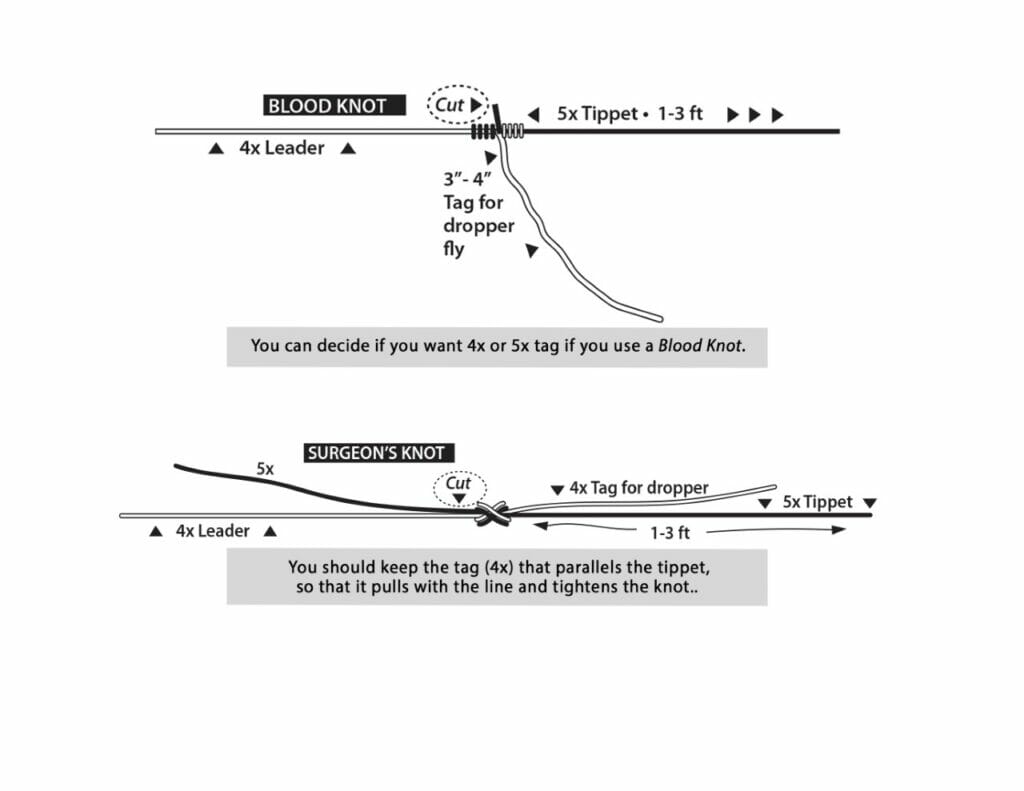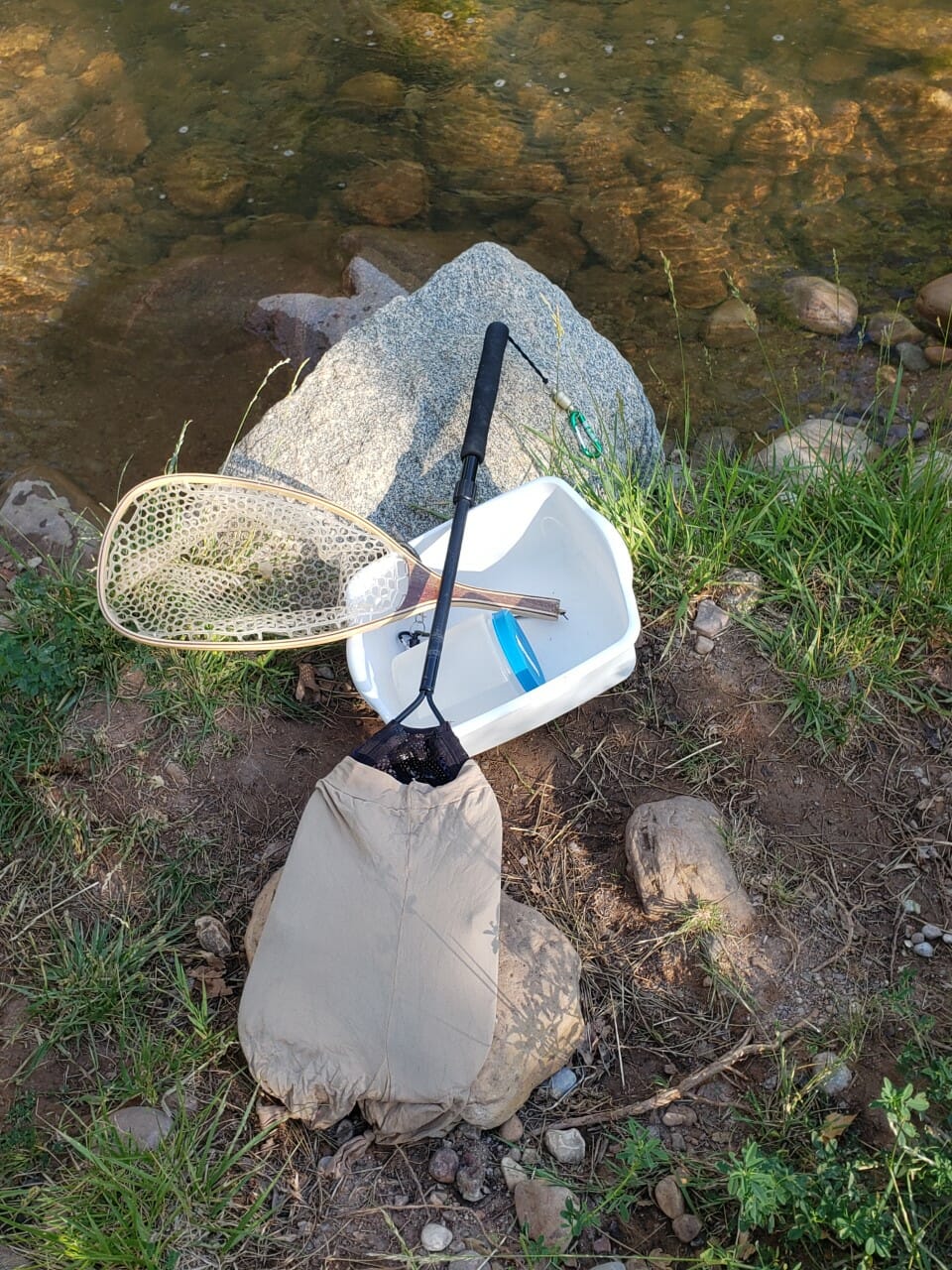By Jim Strogen
We all know the value of matching the hatch, but often that thinking seems more focused on dry fly fishing.
I prefer to fish under the surface. I know that the “bugs” are in front of the fish in their aquatic stages much longer, sometimes a year or more, than during their relatively brief winged phases. As a wet fly fisher, I also try to match the size, shape, and color of the aquatic insects that I am trying to mimic. These bugs are either actively swimming through the water column, or struggling in the drift. This movement facet of imitation is often missing from a fly fisher’s bag of tricks.
Many of us turn over rocks in the riffles to get a sense of the types of bugs in the stream. If you are unfamiliar with how these insects move, a white dishpan is a handy tool.
I will put a pair of pantyhose that I’ve cut to fit over my landing net to help me capture a sample of insects from rocks that I have kicked just upstream of the net in the riffle. Then I position the net, bug side down, over the dishpan and pour a jug of water through the net. The insects in the dishpan reveal details about their movement that I can then include in my presentation.
If you try this, you will see that mayflies move quite differently than caddisflies. Crane fly larvae and damselflies are quite distinctive in their movements as well. Now that you have a sense of how insect types move differently from one another, the next step is to mimic this in your presentation.

I almost always use two flies when I fish, which is legal in Arizona where I do most of my fishing. While many fly fishers using two flies tie their trailer fly to the bend of their lead fly, I want my dropper and trailer fly to move independently.

To do this, just cut one tag end off of either a blood knot or surgeon’s knot when you tie on the tippet. I often fish with a bead-head as my dropper fly under an indicator. My trailer fly is either a smaller bead-head if I want it to cover slightly deeper water than my dropper fly, or an unweighted nymph if I want it to follow in the same plane as the first fly.
Jim Strogen is the youth education coordinator and conservation chair for the Gila Trout Chapter of Trout Unlimited, Payson, Ariz.



